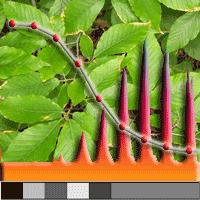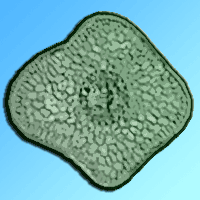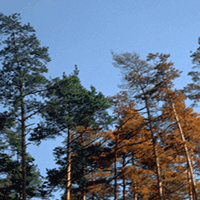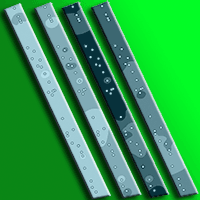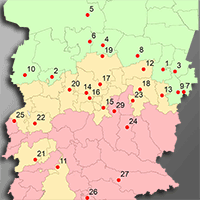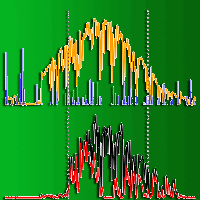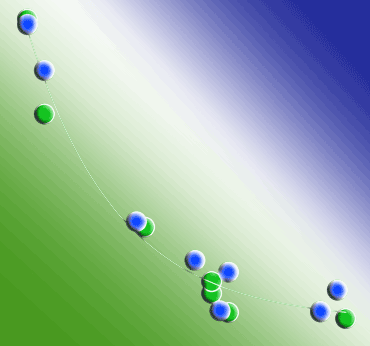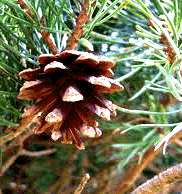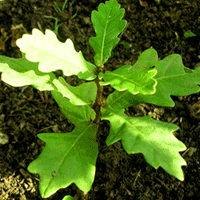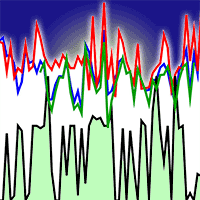
Measured and modelled source water δ18O based on tree-ring cellulose of larch and pine trees from the permafrost zone
Olga V Churakova-Sidorova (1-2) , Sebastian Lienert (3-4), Galina Timofeeva (2), Rolf Siegwolf (2), John Roden (5), Fortunat Joos (3-4), Matthias Saurer (2)
iForest - Biogeosciences and Forestry, Volume 13, Issue 3, Pages 224-229 (2020)
doi: https://doi.org/10.3832/ifor3212-013
Published: Jun 19, 2020 - Copyright © 2020 SISEF
Research Articles
Abstract
To identify source water for trees growing on permafrost in Siberia, we applied mechanistic models that quantify physical and biochemical fractionation processes, leading to oxygen isotope variation (δ18O) in plant organic matter. These models allowed us to investigate the influence of a variety of climatic factors on tree-ring cellulose from two dominant species: Larix cajanderi Mayr. from northeastern Yakutia (69° 22′ N, 148° 25′ E, ~ 250 m a.s.l.) and Pinus sylvestris L. from Central Yakutia (62°14′ N, 129°37′ E, ~ 220 m a.s.l.). The climate of the region is highly continental with short growing seasons, low amount of precipitation and these forest ecosystems are growing on permafrost, which in turn impact the water cycle and climate variation in the δ18O of source water. We compared outputs of the Land surface Processes and eXchanges (LPX-Bern v. 1.3), and Roden-Lin-Ehleringer (RLE) models for the common period from 1945 to 2004. Based on our findings, trees from northeastern and central Yakutia may have access to additional thawed permafrost water during dry summer periods. Owing to differences in the soil structure, active thaw soil depth and root systems of trees at two Siberian sites, Larix cajanderi Mayr. trees can access water not more than from 50 cm depth, in contrast to Pinus sylvestris L. in Central Yakutia which can acquire water from up to 80 cm soil depth. The results enhance our understanding of the growth and survival of the trees in this extreme environment.
Keywords
Conifers, Climate, Drought, Permafrost Thaw Depth, Siberia, δ18O of Source Water
Authors’ Info
Authors’ address
Siberian Federal University, Krasnoyarsk, Svobodniy pr 79, RU-660041 (Russia)
Galina Timofeeva
Rolf Siegwolf 0000-0002-0249-0651
Matthias Saurer 0000-0002-3954-3534
Swiss Federal Institute for Forest, Snow and Landscape Research WSL, Zürcherstrasse 111 CH-8903 Birmensdorf (Switzerland)
Fortunat Joos 0000-0002-9483-6030
University of Bern, Climate and Environmental Physics, University of Bern, Sidlerstr. 5, CH-3012 Bern (Switzerland)
Fortunat Joos 0000-0002-9483-6030
Oeschger Centre for Climate Change Research, University of Bern, Falkenplatz 16, CH-3012 Bern (Switzerland)
Southern Oregon University, Biology Department, Ashland, OR 97520 (USA)
Corresponding author
Paper Info
Citation
Churakova-Sidorova OV, Lienert S, Timofeeva G, Siegwolf R, Roden J, Joos F, Saurer M (2020). Measured and modelled source water δ18O based on tree-ring cellulose of larch and pine trees from the permafrost zone. iForest 13: 224-229. - doi: 10.3832/ifor3212-013
Academic Editor
Rossella Guerrieri
Paper history
Received: Aug 07, 2019
Accepted: Apr 24, 2020
First online: Jun 19, 2020
Publication Date: Jun 30, 2020
Publication Time: 1.87 months
Copyright Information
© SISEF - The Italian Society of Silviculture and Forest Ecology 2020
Open Access
This article is distributed under the terms of the Creative Commons Attribution-Non Commercial 4.0 International (https://creativecommons.org/licenses/by-nc/4.0/), which permits unrestricted use, distribution, and reproduction in any medium, provided you give appropriate credit to the original author(s) and the source, provide a link to the Creative Commons license, and indicate if changes were made.
Web Metrics
Breakdown by View Type
Article Usage
Total Article Views: 39268
(from publication date up to now)
Breakdown by View Type
HTML Page Views: 33414
Abstract Page Views: 3017
PDF Downloads: 2185
Citation/Reference Downloads: 9
XML Downloads: 643
Web Metrics
Days since publication: 2007
Overall contacts: 39268
Avg. contacts per week: 136.96
Citation Metrics
Article Citations
Article citations are based on data periodically collected from the Clarivate Web of Science web site
(last update: Mar 2025)
Total number of cites (since 2020): 7
Average cites per year: 1.17
Publication Metrics
by Dimensions ©
Articles citing this article
List of the papers citing this article based on CrossRef Cited-by.
References
Polar forests of Krasnoyarsk region. Nauka, Novosibirsk, Russia, pp. 207.
Gscholar
Baseline characteristics of climate, permafrost and land cover from a new permafrost observatory in the Lena River Delta, Siberia (1998-2011). Biogeosciences 10: 2105-2128.
CrossRef | Gscholar
Application of eco-physiological models to the climatic interpretation of δ13C and δ18O measured in Siberian larch tree rings. Dendrochronologia 39: 51-59.
CrossRef | Gscholar
Siberian tree-ring and stable isotope proxies as indicators of temperature and moisture changes after major stratospheric volcanic eruptions. Climate of the Past 15: 685-700.
CrossRef | Gscholar
Deuterium and oxygen-18 variations in the ocean and marine atmosphere. In: “Stable Isotopes in Oceanographic Studies and Paleotemperatures” (Tongiorgi E, Lishi FV eds). Pisa, Italy, pp. 9-130.
Gscholar
Historical CO2 records from the Law Dome DE08, DE08-2, and DSS ice cores. In: “Trends: a Compendium of Data on Global Change”. Carbon Dioxide Information Analysis Center, Oak Ridge National Laboratory, US Department of Energy, TX, USA, web site.
Online | Gscholar
Carbon and oxygen isotope effects in the exchange of carbon dioxide between terrestrial plants and the atmosphere. In: “Stable Isotopes and Plant Carbon-water Relations” (Ehleringer JR, Hall AE, Farquhar GD eds). Academic Press, San Diego, CA, USA, pp. 47-70.
CrossRef | Gscholar
Palaeoclimate constraints on the impact of 2 °C anthropogenic warming and beyond. Nature Geoscience 11: 474-485.
CrossRef | Gscholar
Seasonal thaw of soils in the North Yakutian ecosystems. In: Proceedings of the 9th International Conference on “Permafrost on a Warming Planet: Impacts on Ecosystems, Infrastructure and Climate”. University of Alaska, Fairbanks (AK, USA) 29 Jun - 3 Jul 2008, pp. 481-486.
Online | Gscholar
Maximum principle in finite element models for convection-diffusion phenomena. North Holland, Amsterdam, Netherlands, pp. 170.
Gscholar
20th-century changes in carbon isotopes and water-use efficiency: tree-ring based evaluation of the CLM4.5 and LPX-Bern models. Biogeosciences 14 (10): 2641-2673.
CrossRef | Gscholar
Multi-model mean nitrogen and sulfur deposition from the Atmospheric Chemistry and Climate Model Inter-comparison Project (ACCMIP): evaluation of historical and projected future changes. Atmospheric Chemistry Physics 13: 7997-8018.
CrossRef | Gscholar
Fractionation in O-18 between ice and water vapor. Journal de Chimie Physique et de Physico-Chimie Biologique 68: 1424-1436.
Gscholar
The influence of soil temperature on radial increments of larch and pine stems in Central Yakutia. In: Proceedings of the “8th International Conference on Permafrost” (Phillips M, Springman SM, Arenson LU eds). Zurich (Switzerland) 21-25 Jul 2003. Swets and Zeitlinger, Lisse, Netherlands, pp. 811-814.
Online | Gscholar
An interaction between the active layer depth changing and meteorological factors. Earth Cryosphere 8 (4): 3-11. [in Russian]
Gscholar
Measurement of transpiration and leaf conductance. In: “Plant Physiological Ecology” (Pearcy RW, Ehleringer JR, Mooney HA, Rundel PW eds). Chapman and Hall, London, UK, pp. 137-160.
Gscholar
Comparison of δ18O and δ13C values between tree-ring whole wood and cellulose in five species growing under two different site conditions. Rapid Communications in Mass Spectrometry 29 (23): 2233-2244.
CrossRef | Gscholar

